satnanblog
3 posts
Don't wanna be here? Send us removal request.
Text
Computer Graphics
Welcome to the last blog entry on this subject, and today we will be making the jump from the technically limiting world of pixel art, to the technically freeing world of computer graphics. Both these art forms derive from digital art, and rely on the technology to influence their appearance, however while pixel art has reached its peak in regards to hardware, computer graphics is eve evolving.
What is it?
The field of computer graphics is an interesting one for me specifically, as it focuses on using computers to create visuals. Modern digital photography, cinema, video games, cell phone and computer displays, and many specialized applications all use computer graphics as a key technology. There has been a lot of development in specialized hardware and software, and computer graphics technology now powers the majority of devices' screens. It is a recent and expansive field of computer science. Verne Hudson and William Fetter, two Boeing computer graphics experts, first used the expression in 1960. It is frequently referred to as "CG" or "computer-generated imagery" in the context of movies (CGI). Computer science research focuses on the technical aspects of computer graphics.

User interface development, sprite graphics, rendering, ray tracing, geometry processing, computer animation, vector graphics, 3D modeling, shaders, GPU design, implicit surfaces, visualization, scientific computing, image processing, computational photography, scientific visualization, computational geometry, and computer vision are some of the topics in computer graphics. The sciences of geometry, optics, physics, and perception play a significant role in this art form.

The Early History
Many artists and designers worked with mechanical devices and analogue computers in the 1950s, which can be seen as a precursor to the work of the early digital pioneers who came after.

'Oscillon 40,' from 1952, is one of the earliest electronic works in the V&A's collection. Ben Laposky, the artist, manipulated electronic waves that appeared on the small fluorescent screen with an oscilloscope. An oscilloscope is a device that displays the wave shape of an electric signal and is commonly used in electrical testing. The waves on the display would have been constantly moving and undulating, and there would have been no way to record these movements on paper at the time. Only long exposure photography allowed the artist to capture these brief moments, allowing us to see them decades later.

Computers were still in their infancy in the early 1960s, and access to them was extremely limited. Computing technology was heavy, cumbersome, and prohibitively expensive. Such equipment could only be afforded by research laboratories, universities, and large corporations. As a result, computer scientists and mathematicians were among the first to use computers creatively.
Many of the first users programmed the computer themselves. There was no 'user interface', such as icons or a mouse, and very little pre-existing software at the time. Artists and computer scientists were able to experiment more freely with the computer's creative potential by writing their own programs.

Early output devices were equally limiting. The plotter, a mechanical device that holds a pen or brush and is coupled to a computer that regulates its movements, was one of the main sources of output in the 1960s. According to the computer program's instructions, the computer would either guide the pen or brush across the drawing surface or move the paper underneath the pen.

Frieder Nake's 'Hommage à Paul Klee 13/9/65 Nr.2', a screenprint of a plotter drawing done in 1965, was one of the most sophisticated algorithmic works of its time. An algorithmic work is one that is created by the artist using a set of instructions given to the computer program. Nake was inspired by Paul Klee's oil painting 'Highroads and Byroads' (1929), which is now housed in the Ludwig Museum in Cologne.
Come the 1970s, many artists began to even teach themselves to program, as it was more effective then having to rely on collaborating with computer programmers. This was a challenge however, as most of these artists came from a fine art background, as opposed to a scientific or mathematical background.

Major advancements would be made in the educational world as well during this time, as the Slade School of Art, University of London, established the “Experimental and Computing Department”. This was one of the first institutions in the world that fully integrated the use of computers in art to its teaching curriculum.

Popular and renowned computer graphics artist Paul Brown studied at the Slade from 1977 to 1979. His computer-generated artworks employed discrete pieces that grow or propagate in line with a set of simple criteria. Brown created a tile-based picture generation method. Despite the use of very simple forms, building a program to create a work like this would have taken a long time.
Rise of Digital Technologies
With the broad use of computers for both corporate and home usage in the 1980s, digital technology entered everyday life. Computer graphics and special effects first appeared in films such as 'Star Trek II: The Wrath of Khan' and 'Tron,' both released in 1982, as well as television shows. With the rise of video and computer games, computing technology became a much more common sight at home and at work.

The late 1970s saw the debuts of Apple and Microsoft, as well as the introduction of some of the first personal computers. PCs that were both economical and small enough for home usage were now available. Along with this, inkjet printers evolved as the most affordable means of printing in color. With the emergence of off-the-shelf paint software programs, it became considerably easier to make graphics on a computer. The sort of art produced altered as this new medium penetrated mainstream society. Much of the new art from this time period had a distinct 'computer style,' seeming more computer-generated.
Artists
Kenneth Snelson
Kenneth Snelson was a famous sculptor and photographer, who was known for his flexible and rigid components arranged with the concept of "tensegrity". Although he wasn't primarily known as a computer graphics artist, he became well versed in the medium, and experimented a lot with his style in this new burgeoning art form.

This Kenneth Snelson piece is titled Forest Devils' Moon Night. He made this image with a 3D computer animation application. The picture is used to create the left side of a stereoscopic image. When viewed beside a nearly identical image positioned to its right, the two images would have produced the appearance of a 3D world.
James Faure Walker
James Faure Walker is a painter and graphic artist who became well known for his mixed surrealist images, which he called "magic realism". Faure Walker has been employing the computer into his painting work since the late 1980s, incorporating computer-generated imagery into his paintings as well as painterly elements into his digital prints. He alternates between sketching, painting, photography, and computer software, combining and using the many aspects of each. His art usually plays on the contrast between real and digital paint, and it may be difficult to tell the difference at times.

Faure Walker strives to accomplish at least one drawing every day, in pencil, ink, or watercolor. Rather of being representational drawings of objects, these drawings are always abstract and have their roots in gestural mark creation. Similarly, the artist explores digital themes, or linear markings and patterns, using software products such as Illustrator and Photoshop. Faure Walker takes digital pictures of his paintings in progress so that he may experiment with alterations and additions before applying them to the canvas. He uses the same technique to create big digital images like 'Dark Filament,' which incorporate discovered imagery like a botanical picture.
In Conclusion
This has been a very enriching experience, going over these various art forms and discussing their evolution throughout time. None of these three falls in line with the traditions of fine art, which is why I think they appealed to me so much. Hopefully reading these opened your mind to some more unusual and interesting art forms. I hope you had a good time reading regardless, and even learned a thing or two!
0 notes
Text
Pixel Art
Welcome back to the blog, last week we covered Pop Art and some of the notable artists that helped shaped that medium, and today we will tackle the ever-evolving art form of Pixel Art.
What Is It?
Pixel art is a distinct style of digital art that appears to have been purposefully constructed by the positioning of pixels. Each block is a brushstroke, and the pixels work together to form a cohesive artwork. In this sense, pixel art has a mosaic-like feel to it, as many mosaics generate images of tiny squares, which are akin to the blockiness of pixel art. This is such an intriguing feature because, while the notion of minimalist grid-based art isn't exclusive to pixel art, it may be the most identifiable.

Along with the standard form of pixel art that most people understand already, there are a couple of significant genre and subject breaks in this art form. Pixel art is a very flexible medium, and shares many traditions of figure drawing, landscapes, and abstract with traditional media. These genres can often overlap and can be hard to distinguish to the casual viewer, but a couple more prominent genres are:
Isometric: Pixel art drawn in a near-isometric dimetric projection. Originally used in games to provide a three-dimensional view without using any real three-dimensional processing. Normally drawn with a 1:2 pixel ratio along the X and Y-axis.

Sprites: Characters and game assets typically drawn in the fashion of platformer games and fighting games such as Streets of Rage or Streetfighter 2 or JRPGs (Japanese Roleplaying Game) such as Final Fantasy.

Along with the many genres/subjects, there are also several techniques that have become common in the creation of this form of art. Many of these strategies were developed in response to technical constraints, but have withstood the test of time. Some emerged and evolved during the span of Pixel Art's existence. Pixel art is distinguished from other types of digital art by the precise and planned positioning of pixels. Artists employ various brush sizes (e.g., 1x1 or 2x2 pixels) and tools such as free-hand / pencil, lines, and rectangles.

One key difference between pixel art and other digital art is that pixel artists tend to apply a single color at a time, avoiding tools such as soft edges, smudging or blurring.
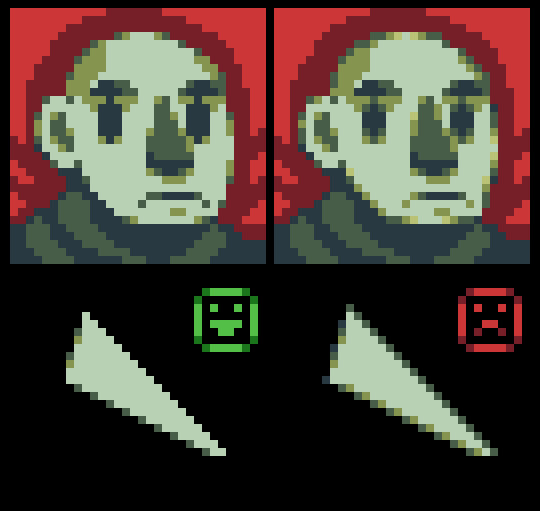
Different restrictions are central to pixel art, and these are often traced back to technical limitations of hardware such as Amiga, Commodore 64, NES or early computers.
Origins and History
Pixel art may be most commonly associated with the rise of video games, however that was not it’s starting point. Some of the earliest examples of pixel art could be found in analog electronic advertising displays, such as the ones from New York City during the early 20th century, with simple monochromatic light bulb matrix displays extant circa 1937. Pixel art as it is known today largely originates from classic video games, particularly classic arcade games such as Space Invaders (1978) and Pac-Man (1980), and 8-bit consoles such as the Nintendo Entertainment System (1983) and Sega Master System (1985).

Video games were beginning to emerge in the entertainment industry by the early 1970s, but due to the severe limitations of early graphics, the first instances of pixel art in video games were somewhat abstract. Because of the poor resolution of computers and game consoles, game designers have to meticulously build game assets by painstakingly placing individual pixels to make recognized symbols, characters, or things. It wasn't all bad however, as abstraction, such as Pong's very simplistic design, sometimes resulted in better game readability and commercial success than trying more detailed realistic art.

The 1980s witnessed a period of innovation in video games, both as a new artform and form of entertainment, in what is frequently referred to as the "golden age of video games" or "golden era of arcade video games." During the early 1980s, most video game developers were programmers rather than graphic artists. As technology advanced, commercial pressure increased for more representational and "realistic" images in video games. As graphics technology advanced, it became feasible to substitute hand-drawn game elements with imported images or 3D polygons, contributing to the development of pixel art as a distinct art form.

Professional artists and graphic designers gradually gained a larger presence in the video game business. The style of 1980s video games has a significant influence on current and future pixel art, both in video games, demoscene visuals, and among independent artists.
As computers became more affordable in the 1980s, software like DEGAS Elite (1986) for the Atari ST, Deluxe Paint (1985) and Deluxe Paint 2 (1986) for the Commodore Amiga, and Paint Magic for the Commodore 64) inspired many subsequent pixel artists to create digital art through careful pixel placement. Some early pixel artists utilized joysticks and keyboards to pixel on the Commodore 64 and the Amstrad CPC.

8-Bit vs. 16-Bit
One major question that is often brought up in regard to Pixel Art, is the difference between 8-bit and 16-bit graphics. First off, in terms of the time period, the 8-bit era spanned 1983 to 1987 while the 16-bit era lasted from 1987 to 1993. If you’re totally unfamiliar with what 8-bit and 16-bit are, it, in part, refers to the tonal variation of the image. An 8-bit picture, for instance, will have fewer amounts of tones available for each color than a 16-bit does. The more color tones available, the more detailed that you can get with your image-making. The bit in 8 or 16-bit refers to the capability of every pixel to use 8 bits for storing the amount of colors that can be displayed. That results in 8-bit graphics being capable of displaying a maximum of 256 colors, while 16-bit can go as high as 65,536 colors.
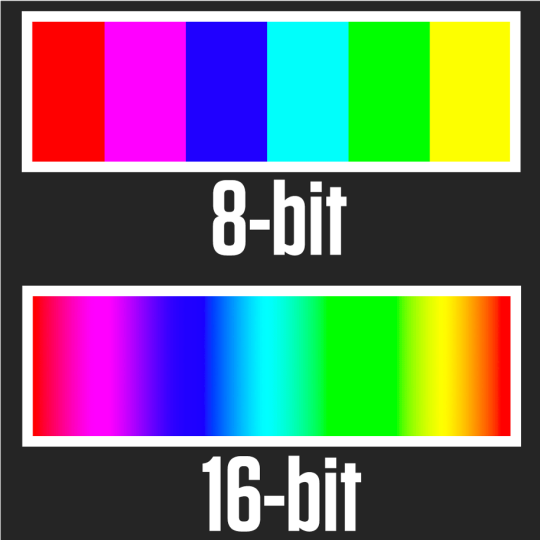
The Fall and Return of Pixel Art
Pixel art declined as software quality increased and new, 3D-capable systems such as the Sony PlayStation and Nintendo 64 were introduced. Pixel art lost its broad presence with the advent of contemporary technology, advanced computers, and 3D graphics, primarily in the realms of consoles and gaming, however, contrary to common assumption, it did not fade away.
By the mid-2000s, 3D graphics and gaming had become the standard, with pixel art regarded uncommon and archaic. This new image sparked a resurgence and respect for its 8-bit values. Many feel that pixel art games have made a resurgence due to nostalgia as the simplicity, minimalism, and lightness of the pixels, as well as the way they remind us of our childhood, make them so appealing.

Although it was never thought that pixel art would go beyond its virtual, cyber depiction, enclosed within a computer screen, it did, in the name of creating tangible artworks. Pixel art spread to other aspects of life, with artists creating pixel art posters, magazine covers, music album covers, desktop wallpapers, paintings, pixelated video advertising, and even pixelated tattoos. They were born pixel by pixel through this one-of-a-kind method of expression, borrowing influence from pop culture, the news, design, and more.
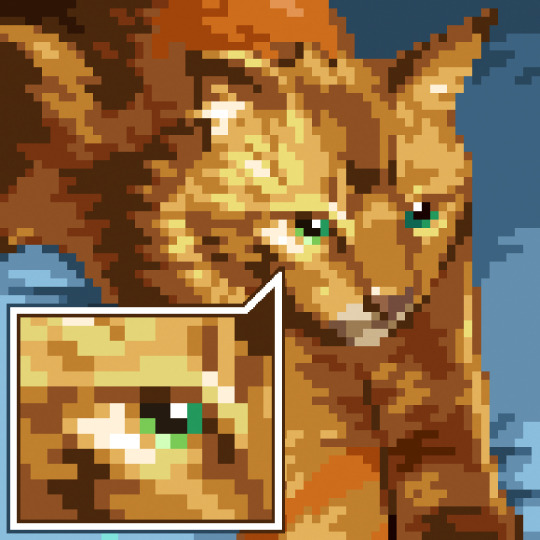
Artists
eBoy
With the rise of Pixel Art, also came its prominence in the art world, separate from its traditional view as strictly being reserved for video games or video displays. One of the artists, or in this case, group of artists that led to this evolution was eBoy, a collection of three men, Kai Vermehrr, Steffen Sauerteig, and Svend Smital. They may be the most famous group of pixel makers out there and are often affectionately reeffered to as “the Godfathers of Pixel”. These guys are famous for their complex illustrations called Pixoramas, city and landscape scenes pixelated, of course, on purpose. To date, they have made pixoramas of places like Tokyo, Paris, New York, Rio, Berlin and London, and are currently Kickstarting the one for San Francisco.
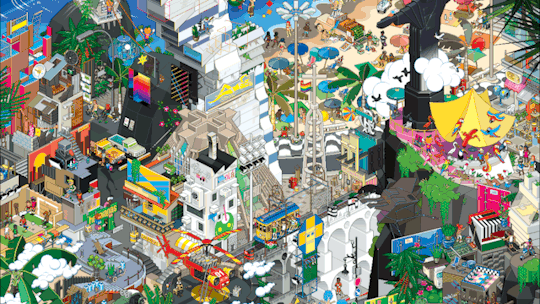
Invader
Another prominent pixel artist is the French urban artist who goes by the name Invader. He is known for his ceramic tile mosaics modeled on the pixelated art of 1970s–1980s 8-bit video games, many of which depict the titular aliens from the arcade games Space Invaders, Pac-Man and Super Mario Bros. (the inspirations for his pseudonym). As of December 2020, his real name is Franck Slama, his creations can be seen in highly visible locations in 79 cities in 20 countries. To accompany his citywide installations, or "Invasions", Invader publishes books and maps as guides to the locations of his mosaics.
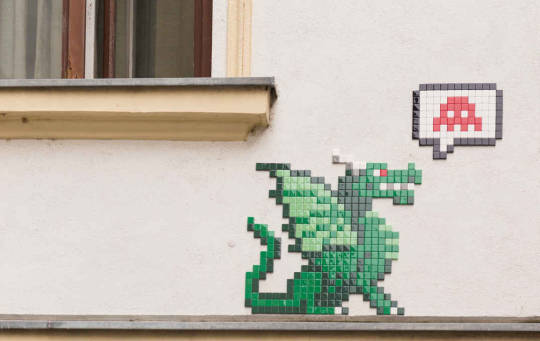
In Conclusion
Pixel art is unlike any other art form, and that is likely due to its more unique origin. Deriving from video games and being an inherently limiting art form has led its artists to getting creative to create some of the most beautiful and retro looking art possible. Thanks for reading, come back next week for our final subject: Computer Graphics!
1 note
·
View note
Text
Pop Art
Hello! Welcome to my blog, where I will be covering some of my favorite art forms over the next few weeks, and the wide-reaching impact that they have had both in the art community, but in my life as well. All of these art forms are transformative and unique in regard to the art field, and that is why they interest me so much. Speaking of transformative, let’s begin with an overview of our first subject in this blog: Pop Art.
The Origins of Pop Art
In terms of going against the grain and rejecting traditional art practices, there is no better example than Pop art. This was an art movement that begin in the US and UK during the 1950s, and the entire core of this new art philosophy was to be an alternative to the old standards and traditions of fine art. Which, in conjunction with the actual physical aesthetic, is why this personally attracted me so much. This was an art form that was considered to be a revolt against the dominant approaches to art and culture, and completely shifted the conversation on what art SHOULD be.

The idea of Pop art was overly complicated either, or to “high art”, as it transitioned away from the theories and methods used in other art forms such as Abstract Expressionism and was more straightforward as a result. Being born amidst such a socio-political climate helped shape the ideals of what this new art form could be. Artists turned toward celebrating simple things, such as commonplace objects, and elevating the everyday and otherwise considered mundane, to the level of fine art. Fine art is not known for its commercial uses, or pop culture imagery, and this is where Pop art in turn shines as advertising, comic books and mundane mass-produced objects are constantly being used in Pop art.

Bright Colors and Recognizable Imagery
Another major element of Pop Art that I think really speaks to me is the bright and saturated colors that are often on display. Sometimes art gets this very posh and pretentious vibe, and a major part of that is the drab color tones that are used in many of the most famous pieces in the world. There is nothing wrong with that less vibrant colors, however when it dominates the art world as significantly as it seemed too, the vibrant colors of something like a Andy Warhol piece really sticks out. Pop art in general is often characterized by its vibrant, bright colors. Primary colors red, yellow, and blue were prominent pigments that appeared in many famous works, particularly in Roy Lichtenstein’s body of work. The idea behind this was to play off of how advertisements would often use bright colors to illicit positive feelings for their products.

The element maybe most synonymous with Pop art is all of the recognizable imagery that is included, or the main subject, within the design. Pop art utilizes images and icons from popular media and products. This included commercial items like soup cans, road signs, photos of celebrities, newspapers, and other items popular in the commercial world. Even brand names and logos were incorporated. Many of the times these logos and brands were being used a basis in a more comedic, borderline satirical way, which added a whole new level of commentary on top of the piece. Humor was also a major component of Pop art. The artists had a strong sense of humor, and it often came across in their pieces, as they used their subject matters to make a statement about current events, poke fun at fads, and challenge the status quo. This was especially relevant in the 1950s following WWII as America was going through a massive shift, and commercialism was on the rise.

Another massive inspiration for Pop art, and vice versa was the comic book scene. Comic books found true artistic expression for the first time during the Pop Art movement, which notable artists like Roy Lichtenstein who often emulated this style in his works. A major feature in the pop art comic style was the Ben-Day dots, this was created and used as a way to minimize the ink being used. As the art styles of comic books and pop art become more synonymous over time, these dots became a common element in pop art. Little additions like these I feel like gave Pop Art this identity that was so unusual for any other art form, because it felt as though it was ever evolving.

Another strong element that was in part inspired by the comic book world was visual cues of expression and action, which became a bit of a mainstay in this style, as you’d often see large action texts describing particular actions.

The Artists
Eduardo Paolozzi
Eduardo Palolozzi was a Scottish artist, known for his sculpture and graphic works. He is widely considered to be one of the pioneers of pop art. His art ranges from sculpture to pop art, although he always seems to be able to integrate a lot of similar elements in whichever art form he chooses, which I think is really fascinating.

This famous piece of his is called “Living in a materialist world. Much of his work included colorful collages, poking fun at post-war consumer society. This one utilizes many mass-produced objects and advertising to illustrate that point. To make this he uses mixed media of newspaper and magazines in a surrealist fashion. The bright ads of perfection displayed what materialism meant back in the day, being a shinier looking human with a house full of new gadgets to show to your neighbors.

This one is called “Hollywood Wax Museum” Another major element that was linked with Palolozzi and pop art is how a lot of material gets been visually removed from its known context, isolated, or combined with unrelated material. This encourages people to interpret their own meaning
Richard Hamilton
Richard William Hamilton was an English painter and collage artist. Many of his pieces were full blown installations or exhibits, which adds a whole element of immersion to his art that I truly appreciate. His 1955 exhibition Man and his 1956 collage Just what is it that makes today's homes so different, so appealing?, are considered by critics and historians to be among the earliest works of pop art.

This piece has a particularly fun name, “Just what is it that makes today's homes so different, so appealing?” In this iconic collage by the British artist Richard Hamilton, created in 1956, a midcentury living room is filled to the brim with logos and cut-out images of consumer products. After WWII, many of the factories that had been mobilized to create airplanes, artillery, and other military necessities were repurposed towards the manufacturing of popular culture, luxury items, and household products. This was often parodied in popart work, and specifically Hamilton’s collage.

This next piece was an an installation that was conceived for the legendary exhibition This is Tomorrow held in 1956 at the Whitechapel Art Gallery in London. It was called “Fun House”. Visitors had to squeeze through a narrow corridor past pin-up pictures, hundreds of advertisements, movie posters and spinning color discs, while songs by Elvis Presley and Little Richard alternately blared from a jukebox. The idea behind this was to group together an idealistic location according to the ideals of modern marketing and post-war commercialism.
Andy Warhol
Next up we have probably the most recognizable and influential artist of the bunch, Andy Warhol. He was one of the most prolific and popular artists of his time, using both avant-garde and highly commercial sensibilities. His works explore the relationship between artistic expression, advertising, and celebrity culture that flourished by the 1960s, and span a variety of media, including painting, silkscreening, photography, film, and sculpture.

This piece really showcases the Pop Art tendency to use commercial projects in their art, as this is expectably titled, “Campbell's Soup Cans”. Andy Warhol famously appropriated familiar images from consumer culture and mass media, among them celebrity and tabloid news photographs, comic strips, and, in this work, the widely consumed canned soup made by the Campbell’s Soup Company. When the canvases were originally showed, it was displayed in shelves to mimic products in a grocery aisle. Though Campbell’s Soup Cans resembles the mass-produced, printed advertisements by which Warhol was inspired, its canvases are hand painted.

This next piece may be Andy Warhol’s most popular one of all. It’s a portrait of Marilyn Monroe, simply titled “Marilyn Diptych”. The name of this piece is a referring to diptych, a painting hinged on two panels that can close together like almost like a book. Warhol used a publicity photo for her 1953 film Niagara as the source image. The use of two contrasting canvases for Marilyn Diptych illustrates the contrast between the public life of the star, who at the time was one of the most famous women alive, and her private self. The print is vibrantly colored to reflect her vivacious personality, akin to the majority of Andy Warhol’s colorful gallery.

This piece was another portrait, this time of Queen Elizabeth, and titled “Queen Elizabeth II of the United Kingdom”. Nobody said Andy Warhol was all that creative in his naming schemes. However, he was an obsessive photographer. He not only took photographs of the rich, famous and beautiful, but also documented the myriad aspects of his daily life. This specific portrait of Queen Elizabeth was based on photos of Elizabeth II taken for her Silver Jubilee in 1977. The same basic image of each queen appears in each of her four prints, but they vary in color. Warhol began working in this style in the mid-1970s, fragmenting the image with various overlaid shapes and patches of color.
Roy Lichtenstein
Finally, we have my favorite artist in the grouping, and one of my favorite artists of all time. Roy Lichtenstein was so influential during the 1960s, he became a leading figure in this new art movement. His work defined the premise of pop art through parody. Inspired by the comic strip, Lichtenstein produced bright, graphic works compositions that were often made in a tongue-in-cheek manner.

This piece is titled “Drowning Girl”. The painting has been described as a "masterpiece of melodrama” and is one of the artist's earliest images depicting women in tragic situations, a theme to which he often returned in the mid-1960s. This piece uses the conventions of comic book art, a thought bubble reads: "I Don't Care! I'd Rather Sink". This narrative element highlights the clichéd melodrama, while its graphics — including Ben-Day dots that echo the effect of the printing process — reiterate Lichtenstein's theme of painterly work that imitates mechanized reproduction.

This final piece was titled “Bedroom at Arles”, as opposed to Bedroom in Arles, the original Vincent Van Gogh piece this was emulating. Lichtenstein has updated the original work by van Gogh with contemporary chairs and replaced casual shirts with businessmen's white shirts.
In spite of Lichtenstein’s reputation for parody, this was more of an homage to one of his favorite Van Gogh paintings. He uses the common popart Ben-Day dots on one wall, as well as many other fun patterns throughout the rest of the room.
In Conclusion
Pop art was and still is one of the most influential art forms in the past century, and helped alter this strict view of what could and couldn’t be considered true art. Next, we will be tackling another art form that may be considered even more controversial in the traditional fine art world, and that is “Pixel Art”. Thank you for reading, and I’ll see you back for next week!
1 note
·
View note